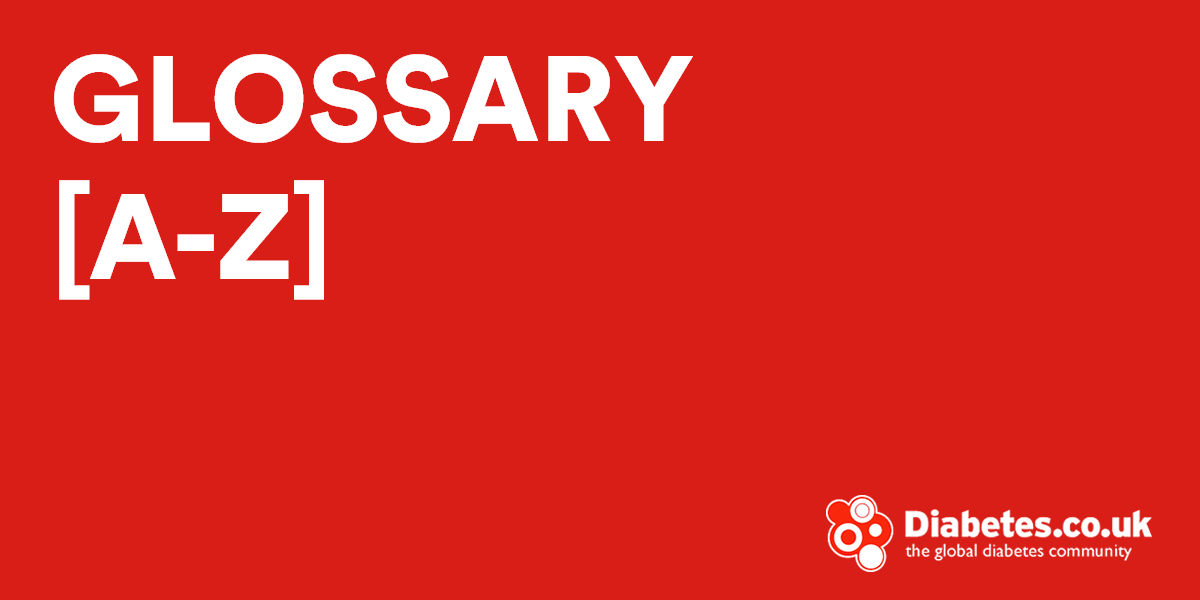HDL cholesterol (kuh-LESS-tuh-rawl), stands for high-density-lipoprotein (LIP-oh-PRO-teen) cholesterol:
a fat found in the blood that takes extra cholesterol from the blood to the liver for removal. Sometimes called “good” cholesterol.
hemodialysis:
see dialysis
hemoglobin A1C test:
see A1C
heredity:
the passing of a trait from parent to child.
HHNS:
see hyperosmolar hyperglycemic nonketotic syndrome
high blood glucose:
see hyperglycemia
high blood pressure:
see hypertension
high-density lipoprotein cholesterol:
see HDL cholesterol
HLA:
see human leukocyte antigens
HMD:
acronym for Homeopathic Medical Doctor.
HNC:
acronym for Holistic Nurse Certified.
home glucose monitor:
see blood glucose meter
honeymoon phase:
temporary remission of hyperglycemia that occurs in some people newly diagnosed with type 1 diabetes , when some insulin secretion resumes for a short time, usually a few months, before stopping again.
hormone:
a chemical produced in one part of the body and released into the blood to trigger or regulate particular functions of the body. For example, insulin is a hormone made in the pancreas that tells other cells when to use glucose for energy. Synthetic hormones, made for use as medicines, can be the same or different from those made in the body.
human leukocyte antigens (HLA):
proteins located on the surface of the cell that help the immune system identify the cell either as one belonging to the body or as one from outside the body. Some patterns of these proteins may mean increased risk of developing type 1 diabetes
hyperglycemia (HY-per-gly-SEE-mee-uh):
excessive blood glucose. Fasting hyperglycemia is blood glucose above a desirable level after a person has fasted for at least 8 hours. Postprandial hyperglycemia is blood glucose above a desirable level 1 to 2 hours after a person has eaten.
hyperinsulinemia (HY-per-IN-suh-lih-NEE-mee-uh):
a condition in which the level of insulin in the blood is higher than normal. Caused by overproduction of insulin by the body. Related to insulin resistance
hyperlipidemia (HY-per-li-pih-DEE-mee-uh):
higher than normal fat and cholesterol levels in the blood.
hyperosmolar (HY-per-oz-MOH-lur) hyperglycemic (HY-per-gly-SEE-mik) nonketotic (non-kee-TAH-tik) syndrome (HHNS):
an emergency condition in which one’s blood glucose level is very high and ketones are not present in the blood or urine If HHNS is not treated, it can lead to coma or death.
hypertension (HY-per-TEN-shun):
a condition present when blood flows through the blood vessels with a force greater than normal. Also called high blood pressure Hypertension can strain the heart, damage blood vessels, and increase the risk of heart attack, stroke , kidney problems , and death.
hypoglycemia (hy-po-gly-SEE-mee-uh):
a condition that occurs when one’s blood glucose is lower than normal, usually less than 70 mg/dL Signs include hunger, nervousness, shakiness, perspiratio, dizziness or light-headedness, sleepiness, and confusion. If left untreated, hypoglycemia may lead to unconsciousness. Hypoglycemia is treated by consuming a carbohydrate -rich food such as a glucose tablet or juice. It may also be treated with an injection of glucagon if the person is unconscious or unable to swallow. Also called an insulin reaction
hypoglycemia unawareness (un-uh-WARE-ness):
a state in which a person does not feel or recognize the symptoms of hypoglycemia People who have frequent episodes of hypoglycemia may no longer experience the warning signs of it.
hypotension (hy-poh-TEN-shun):
low blood pressure or a sudden drop in blood pressure. Hypotension may occur when a person rises quickly from a sitting or reclining position, causing dizziness or fainting.




